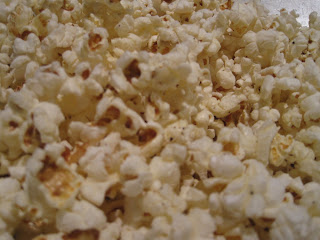
The pepper sauce that makes the bed for these scallops combines red bell peppers with hot peppers to get the desired spiciness of the sauce. I was in the mood for a little heat so I used more hot than mild peppers. It's important to adjust to your personal preferences. Using all red bell peppers for this recipe will result in a sweet pepper sauce.
Seared scallops are one of our favorite seafood dishes, it seems obvious to say, if they are cooked right. It's my opinion, the best way to enjoy scallops is if they have crispy seared sides that highlight the creamy tenderness of the scallop. To achieve a nice sear it is essential to use very little oil and to cook the scallops quickly using a hot skillet.
Pan Seared Scallops in a Spicy Red Pepper Cream
serves 2
Red Pepper Cream Sauce
2 cups of roughly chopped peppers (a combination of red bell peppers and spicy peppers depending on your desired level of heat)
1/2 cup white wine
2 tbsp heavy cream
1 tbsp butter
1 tsp honey
1 tsp kosher salt
1 tsp freshly ground black pepper
Pan Seared Scallops
6-8 large sea scallops
1 tsp ground cumin
1 tsp ground chili powder
1 tsp kosher salt
1 tsp sugar
1/2 tsp olive oil
Add all the ingredients for the sauce into a blender. Puree until smooth. Transfer to a saucepan to simmer for 5 minutes.
Place all the seasoning ingredients for the scallops in a small bowl. Mix to combine with a fork. Pat each scallop dry with a paper towel and then press each side of each scallop into the seasoning bowl.
In a large skillet hot on high heat. Add the 1/2 teaspoon of olive oil. Move the pan around to even coat with the oil. Reduce the heat to medium high. Place the seasoned scallops in the hot skillet. After 3 minutes turn the scallops. Continue cooking for 1-2 minutes depending on the thickness of the scallops.
Spoon about 1/2 cup of sauce on each plate and top with the scallops. Garnish with pepper slivers.

























































